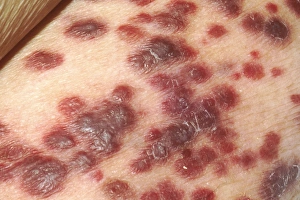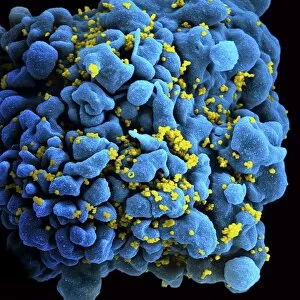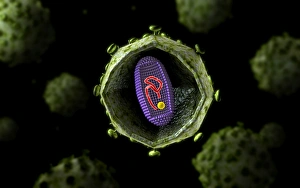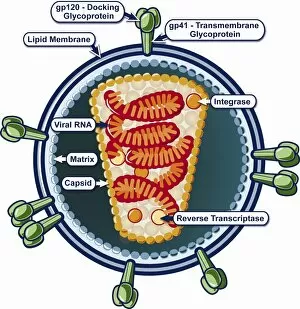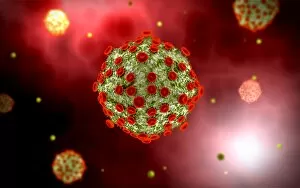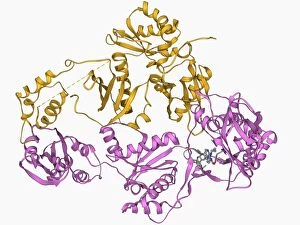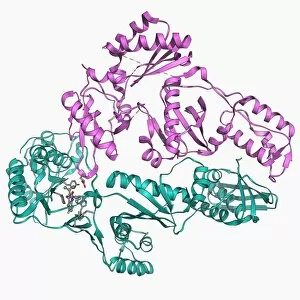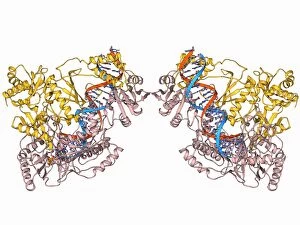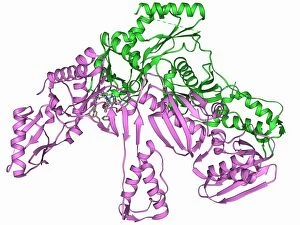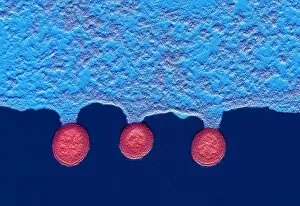Acquired Immunodeficiency Syndrome Collection
"Unveiling the Complexities of Acquired Immunodeficiency Syndrome: A Closer Look at HIV and its Devastating Consequences" Kaposis sarcoma on the skin of an AIDS patient
All Professionally Made to Order for Quick Shipping
"Unveiling the Complexities of Acquired Immunodeficiency Syndrome: A Closer Look at HIV and its Devastating Consequences" Kaposis sarcoma on the skin of an AIDS patient: Witnessing the visible impact of AIDS, as Kaposis sarcoma manifests on the skin, serves as a stark reminder of the disease's relentless assault. Cluster of HIV virus: This captivating image captures a cluster of HIV viruses, highlighting their ability to rapidly multiply and overwhelm our immune system. Colorized image of HIV-infected H9 T-cell: Delving into the microscopic realm, this vibrant depiction showcases an infected H9 T-cell under attack by HIV, illustrating how it hijacks our own cells for replication. Scanning electron micrograph of HIV particles infecting a human T cell: Through this high-resolution view, we witness firsthand how cunningly HIV infiltrates human T-cells, compromising our body's defense mechanisms. Conceptual image of HIV virus: This thought-provoking visual representation encapsulates both the fear and fascination surrounding one of humanity's most formidable adversaries - the elusive yet destructive nature of the HIV virus. Microscopic view of HIV virus, cross-section: Peering through powerful lenses reveals intricate details within an infected host; here we observe a cross-section view that unravels further secrets about this minuscule but life-altering pathogen. Microscopic view inside lungs shows presence of HIV virus: Gaining insight into where AIDS truly strikes home, this microscopic glimpse unveils how even delicate lung tissues become battlegrounds for viral invasion in those affected by this devastating syndrome. Structure of HIV revealed: Unlocking its structural blueprint is crucial in understanding how such a tiny entity can wreak havoc on our bodies; behold here an enlightening portrayal showcasing key components that make up this notorious virus. Conceptual image capturing essence and impact of HIV virus.

